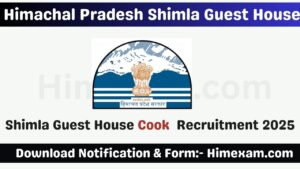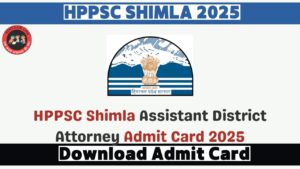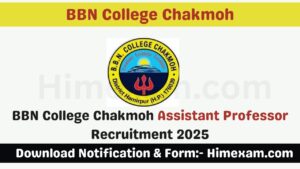Table of Contents
ToggleImportant Indian History Question Answer In English Set-3
||Important Indian History Question Answer In English Set-3||Important Indian History Question Answer for hpssc/hpsssb Set-3||
21. The great silk-route to the Indians was opened by :
(A) Kanishka
(B) Ashoka
(C) Harsha
(D) Fa-Hien
Explanation:-
The Silk Road or Silk Route is a modern term referring to a historical network of interlinking trade routes across the Afro-Eurasian landmass that connected East, South, and Western Asia with the Mediterranean and European world, as well as parts of North and East Africa. Extending 6,500 km, the Silk Road gets its name from the lucrative Chinese silk trade along it, which began during the Han Dynasty (206 BC – 220 AD). The Kushan empire incorporated Samarkand, Bokhara and Fergana, bordering on the Silk Road towns of Kashgar, Yarkand and Khotan. The main route from Central Asia into India, connecting India with the Silk Roads and the Mediterranean, ran through Gandhara. Kanishka sought to promote the thriving trade with the Silk Road centres like Kashgar and beyond, sending an envoy to Ttajan in Rome.
22. The rulers of which dynasty started the practice of granting tax-free villages to Brahmanas and Buddhist Monks?
(A) Satavahanas
(B) Mauryas
(C) Guptas
(D) Cholas
Explanation:-
Land grants formed an important feature of the Satavahana rural https://himexam.com/wp-content/uploads/2021/12/Madhya-Pradesh-MP-PEB-Group-2-Sub-Group-4-Various-Post-Answer-Key-2021.jpgistration. Inscriptions show that the Satavahanas started the practice of granting fiscal and https://himexam.com/wp-content/uploads/2021/12/Madhya-Pradesh-MP-PEB-Group-2-Sub-Group-4-Various-Post-Answer-Key-2021.jpgistrative immunities to Brahmins and Buddhist monks. Earlier, the grants to individuals were temporary but later grants to religious beneficiaries were permanent. Perhaps the earliest epigraphic grant of land is found in the Nanaghat Cave Inscription of naganika, who bestowed villages (grama) on priests for officiating at Vedic sacrifices, but it does not speak of any concessions in this context. These appear first in grants made by Gautamiputra Satakarni in the first quarter of the second century A.D.
23. The most important text of vedic mathematics is :
(A) Satapatha Brahman
(B) Atharva Veda
(C) Sulva Sutras
(D) Chhandogya Upanishad
Explanation:-
The Shulba Sutras are sutra texts belonging to the Strauta ritual and containing geometry related to firealtar construction. They are part of the larger corpus of texts called the Shrauta Sutras, considered to be appendices to the Vedas. They are the only sources of knowledge of Indian mathematics from the Vedic period. The four major Shulba Sutras, which are mathematically the most significant, are those composed by Baudhayana, Manava, Apastamba and Katyayana
24. Yavanika or curtain was introduced in Indian theatre by which of the following?
(A) Shakas
(B) Parthians
(C) Greeks
(D) Kushans
Explanation:-
The most interesting term in Indian drama with Greek connotation is yavanika, which means a stage curtain. For the first time in Panini’s grammar, there is a reference to Yavana and Yavanani writing. However, the theory is not only erroneous but ridiculous because there is no curtain in the Greek drama and also there is no word “yavanika” in Sanskrit language. There is Yavani meaning Greek woman.
25. Who started the Saka Era which is still used by the Government of India?
(A) Kanishka
(B) Vikramaditya
(C) Samudra Gupta
(D) Asoka
Explanation:-
The mightiest of the Kushan rulers in India was Kanishka. He was in power from 78 AD to 120 AD. It was Kanishka who initiated the Saka Era in 78 AD. Through inheritance and conquest, Kanishka’s kingdom covered an area extending from Bukhara (now in Uzbekistan) in the west to Patna in the Ganges Valley in the east, and from the Pamirs (now in Tajikistan) in the north to central India in the south. His capital was Purushpura (Peshawar
26. What inspired the paintings of Ajanta ?
(A) Compassionate Buddha
(B) Radha-Krishan Leela
(C) Jain Thirthankaras
(D) Mahabharata encounters
Explanation:-
The Ajanta Caves in Aurangabad district of Maharashtra, India are 30 rock-cut cave monuments which date from the 2nd century BCE to the 600 CE. The caves include paintings and sculptures considered to be masterpieces of Buddhist religious art (which depict the Jataka tales) as well as frescos which are reminiscent of the Sigiriya paintings in Sri Lanka. The Ajanta cave paintings depict the life of Gautam Buddha.
27. Who among the following was the first to invade India ?
(A) Xerxes
(B) Alexander
(C) Darius-I
(D) Seleucus
Explanation:-
In about 518 BCE, the Persians invaded India. They were led by King Darius I, who conquered the Indus Valley and the area that is now the state of Punjab. Darius-I was successful in maintaining power, and his descendants continued to rule the area when he died. Darius-I also began to collect a tribute tax, and spread news of India’s many natural resources to Europe
28. Which among the following is the oldest dynasty ?
(A) Maurya
(B) Gupta
(C) Kushan
(D) Kanva
Explanation:-
The Maurya Empire was a geographically extensive Iron Age historical power in ancient India, ruled by the Mauryan dynasty from 321 to 185 BC. Originating from the kingdom of Magadha in the IndoGangetic plains (modern Bihar, eastern Uttar Pradesh and Bengal) in the eastern side of the Indian subcontinent, the empire had its capital city at Pataliputra (modern Patna). The Empire was founded in 322 BC by Chandragupta Maurya. The Gupta Empire was an ancient Indian empire which existed from approximately 320 to 550 CE and covered much of the Indian Subcontinent. The Kushan Empire was originally formed in the early 1st century AD under Kujula Kadphises in the territories of ancient Bactria around the Oxus River (Amu Darya), and later based near Kabul, Afghanistan. The Kanva dynasty was a Brahman dynasty founded by Vasudeva Kanva, the minister of Devabhuti, the last Sunga king in 75 BCE
29. With which of the following is the classic “Jivaka Chintamani” in Tamil associated ?
(A) Jainism
(B) Buddhism
(C) Hinduism
(D) Christianity
Explanation:-
Jivaka Chintamani (fabulous gem) is a classical epic poem, considered one of the five great Tamil epics according to later Tamil literary tradition, the others being Manimegalai, Silappadikaram, Valayapathi and Kundalakesi. It was composed during the 10th century CE by Thiruthakka Thevar, a Jain monk. It narrates the romantic exploits of Jeevaka and throws light on arts of music and dance of the era. It is reputed to have been the model for Kamba Ramayanam. The epic is based on Sanskrit original and contains the exposition of Jain doctrines and beliefs
30. Where did Lord Buddha breathe his last?
(A) Rajgir
(B) Bodh Gaya
(C) Sarnath
(D) Kushinagar
Explanation:-
Kushinagar is a town and a nagar panchayat in Kushinagar district in the Indian state of Uttar Pradesh. It is an important Buddhist pilgrimage site, where Gautama Buddha is thought to have attained Parinirvana after his death. It is one of the most important four holy sites for Buddhists. At this location, near the Hiranyavati River, Gautama Buddha attained Parinirvana (or ‘Final Nirvana’) after falling ill from eating a meal of a species of mushroom, or possibly pork.
Join Our Telegram Group :- Himexam









